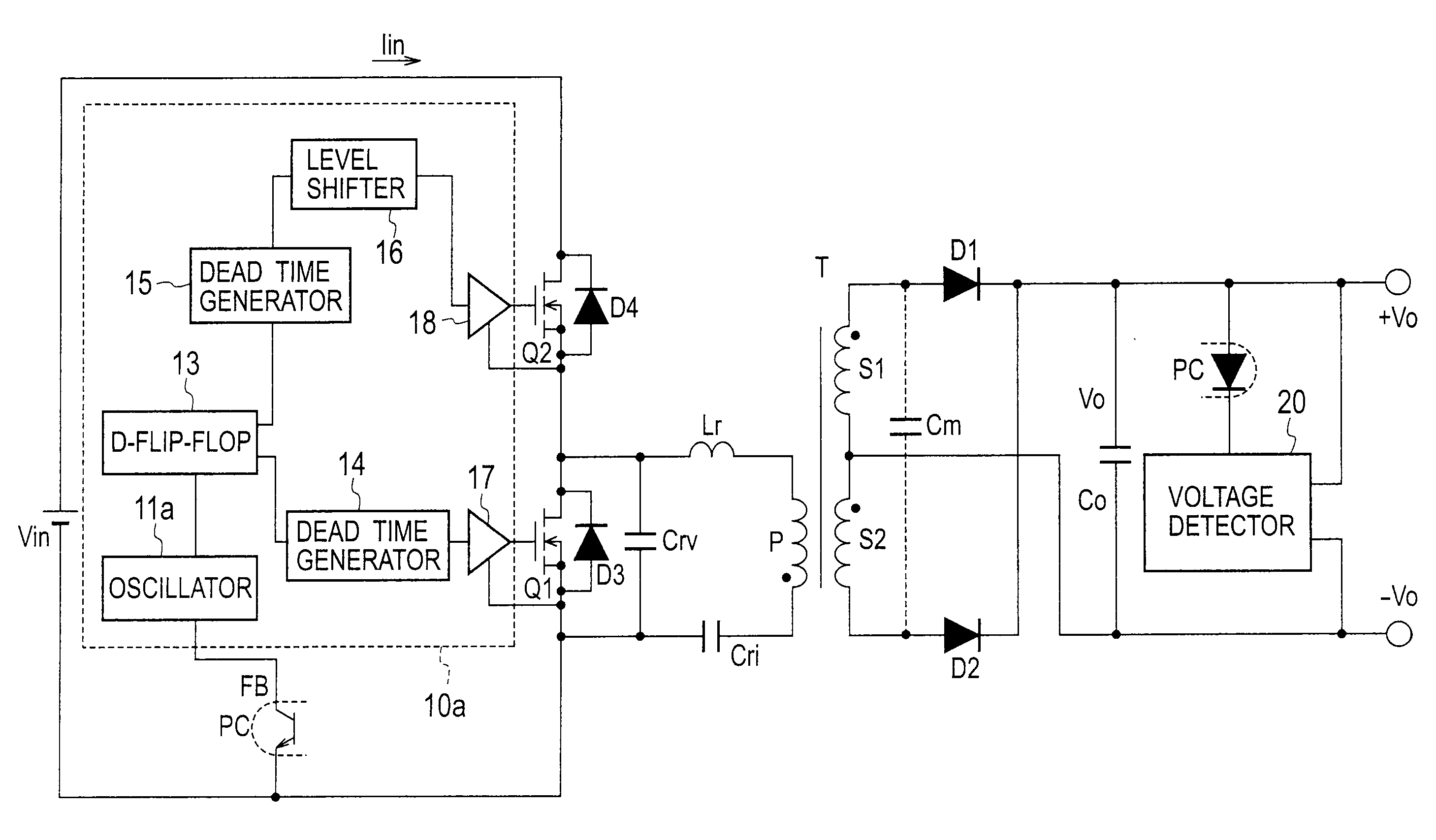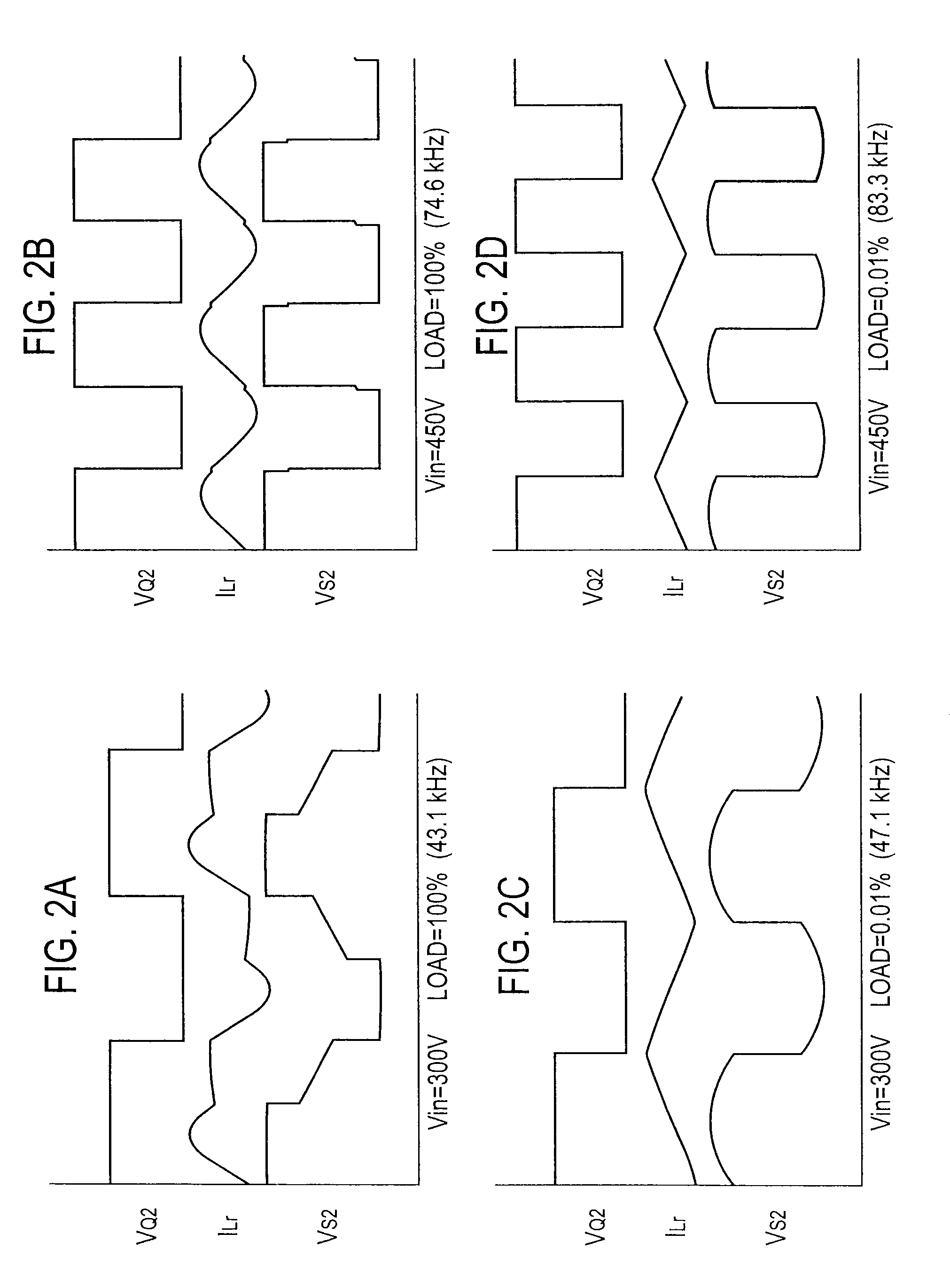Dc-dc converter
a dc-dc converter and converter technology, applied in the direction of electric variable regulation, process and machine control, instruments, etc., can solve the problems of large loss, abnormal oscillation etc., to prevent abnormal oscillation without increasing the gain of the photocoupler, deterioration of efficiency, and prevent abnormal oscillation.
- Summary
- Abstract
- Description
- Claims
- Application Information
AI Technical Summary
Benefits of technology
Problems solved by technology
Method used
Image
Examples
embodiment 1
[0034]FIG. 6 is a circuit diagram illustrating a DC-DC converter according to Embodiment 1 of the present invention. In FIG. 6, both ends of a DC power source Vin are connected to a series circuit including switch elements Q1 and Q2 each of a MOSFET. Connected between drain and source of the switch element Q1 is a diode D3 and connected between drain and source of the switch element Q2 is a diode D4. The diodes D3 and D4 may be parasitic diodes of the switch elements Q1 and Q2. Between the drain and source of the switch element Q1, there are connected a series circuit including a reactor Lr, a primary winding P of a transformer T, and a current resonant capacitor Cri, as well as a voltage resonant capacitor Crv.
[0035]Secondary windings S1 and S2 of the transformer T are connected in series. A first end of the secondary winding S1 is connected to an anode of a Diode D1. A first end of the secondary winding S2 is connected to an anode of a diode D2. Cathodes of the diodes D1 and D2 ar...
embodiment 2
[0046]FIG. 8 is a circuit diagram illustrating a DC-DC converter according to Embodiment 2 of the present invention. The DC-DC converter of Embodiment 2 employs as the nonlinear response unit an oscillator 11b and a logarithmic converter 12, instead of the oscillator 11a of Embodiment 1. The remaining configuration of Embodiment 2 is the same as that of Embodiment 1, and therefore, the oscillator 11b and logarithmic converter 12 will mainly be explained.
[0047]FIG. 9 is a circuit diagram illustrating the logarithmic converter 12 and oscillator 11b contained in a controller 10b of the DC-DC converter according to the present embodiment.
[0048]As illustrated in FIG. 10, the logarithmic converter 12 converts a feedback voltage FB (input voltage) from a photocoupler PC into a logarithmic voltage (a voltage that nonlinearly changes) and outputs the converted voltage as an output voltage to the oscillator 11b. The logarithmic converter 12 has a logarithmic characteristic illustrated in FIG....
PUM
 Login to View More
Login to View More Abstract
Description
Claims
Application Information
 Login to View More
Login to View More - R&D
- Intellectual Property
- Life Sciences
- Materials
- Tech Scout
- Unparalleled Data Quality
- Higher Quality Content
- 60% Fewer Hallucinations
Browse by: Latest US Patents, China's latest patents, Technical Efficacy Thesaurus, Application Domain, Technology Topic, Popular Technical Reports.
© 2025 PatSnap. All rights reserved.Legal|Privacy policy|Modern Slavery Act Transparency Statement|Sitemap|About US| Contact US: help@patsnap.com



